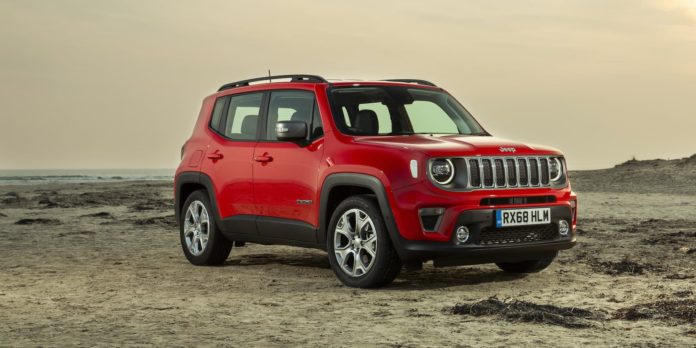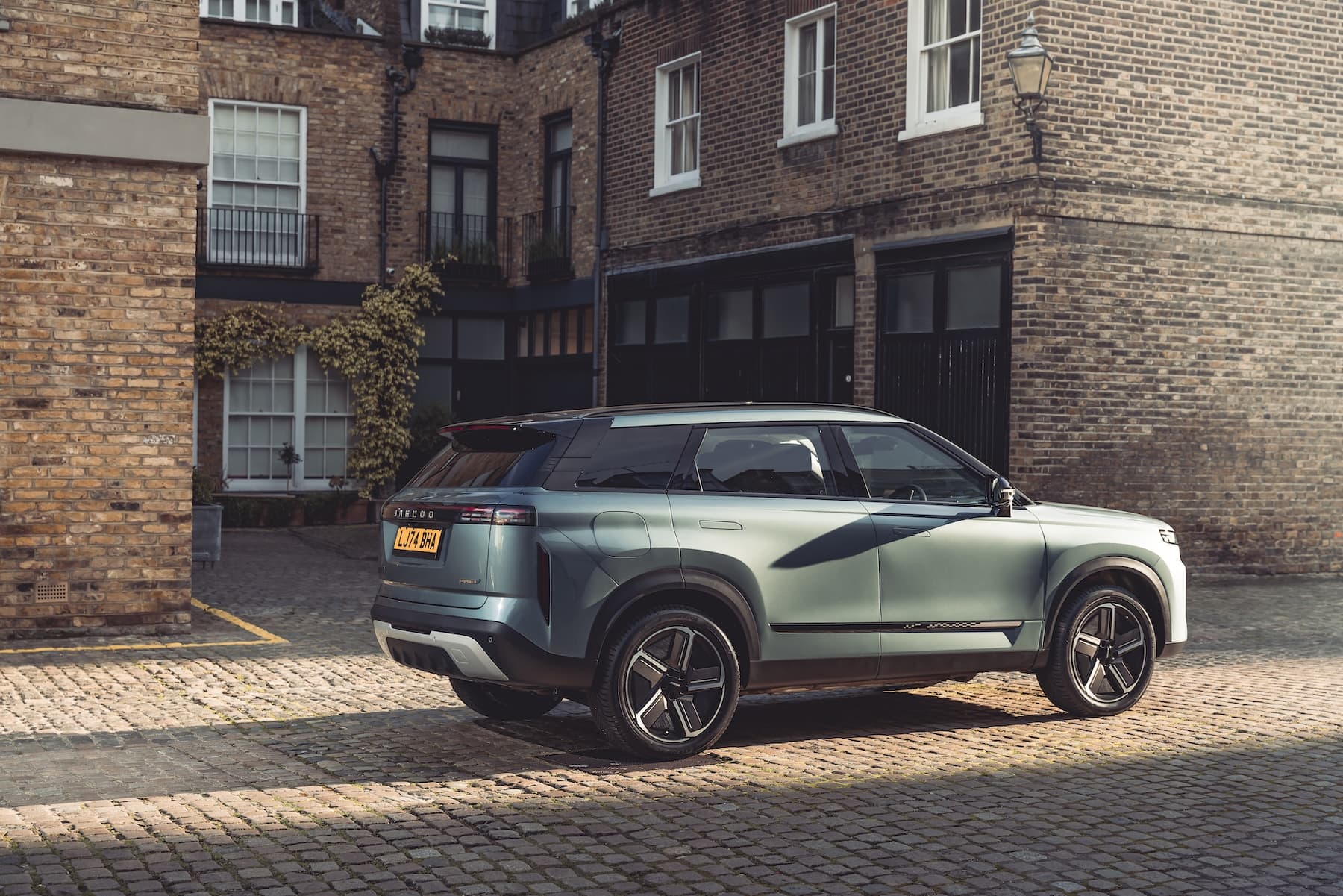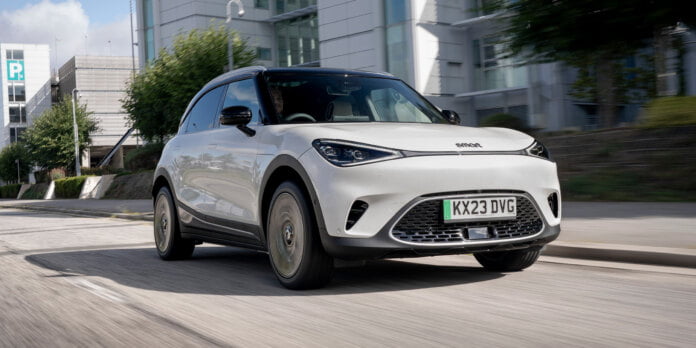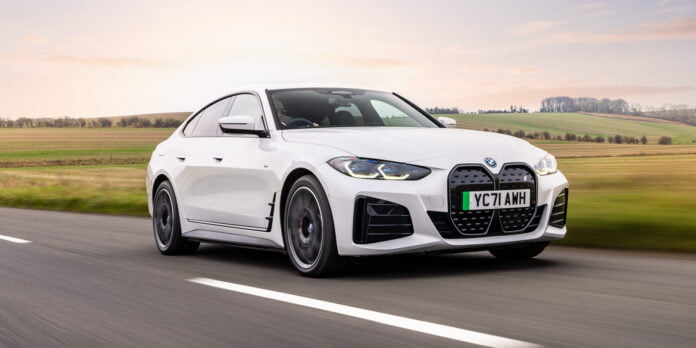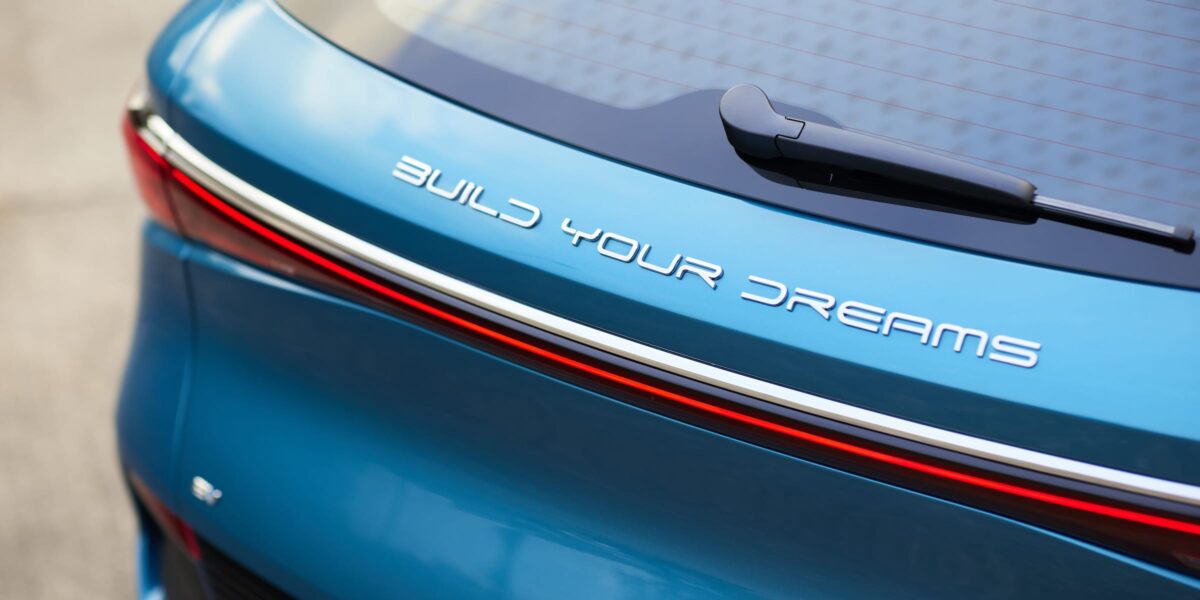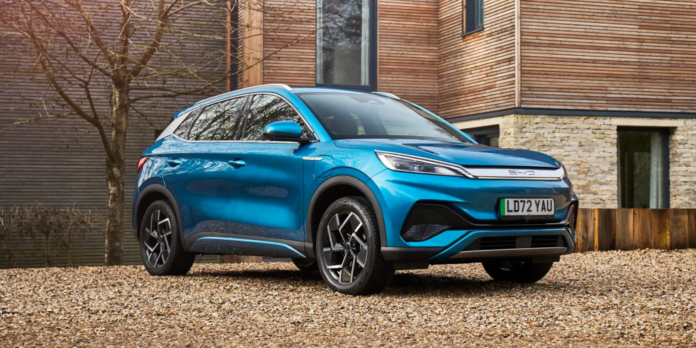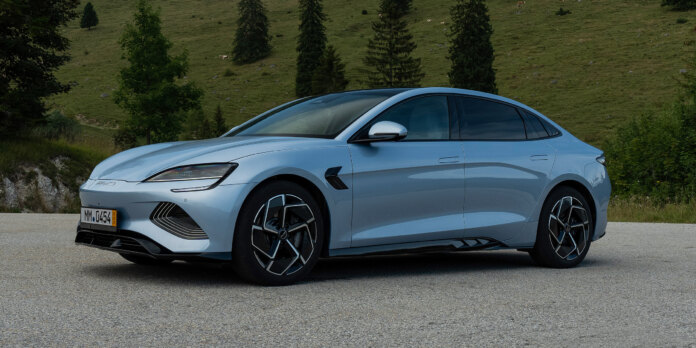Make and model: BMW iX
Description: Large electric SUV
Price range: from £75,315
BMW says: “The BMW iX defines a new chapter for the brand with its pioneering design, cutting-edge technology and dynamic electrified drive.”
We say: Whatever you think of the BMW iX’s polarising styling, you can’t argue with the driving experience or the cabin ambience. It’s a fantastic car.
Introduction
This is the BMW iX, which has been around for four years now. It’s certainly been one of the most controversial new cars of the current decade, simply because of its styling. You’ll struggle to find anyone who doesn’t have a strong opinion about how it looks, even if they’ve never driven it and are not in the market to buy one.
Once you get past the styling, however, there’s been almost unanimous agreement from motoring journalists about the quality of the rest of the iX package. From the first reviews four years ago, critics have praised the quality of engineering beneath that curiously shaped bodywork, awarding it high marks for its driving performance and the quality of its interior.
Now BMW has given the iX a mid-life refresh. The styling remains just as controversial, although some minor changes have improved things – especially on the most popular M Sport models. Depending on the specific model you choose, there’s also more power, better battery range and further refinements to the driving experience.
What is it?
The BMW iX is a large, luxury SUV and a dedicated EV. That makes it unusual for a BMW, as the rest of its current electric line-up (the i4, i5, i7, iX1, iX2 and iX3) are jointly developed as both fossil-fuel and electric models. Being designed as an EV from the ground up means that it takes full advantage of the packaging benefits of an electric car, with a spacious cabin that offers plenty of room both front and rear, and great weight distribution that makes the car comfortable and well-balanced to drive.
The iX range received a mid-life update (called LCI, or life cycle impulse, in BMW-speak) in early 2025, which follows the usual EV programme of some refreshed styling, revised equipment levels, and improvements to the electric motors and batteries.
Even after four years on sale, there are not many comparable cars to the BMW iX. Audi had a model called the Q8 e-tron, which has now been discontinued and replaced by the new Q6 e-tron, but these are both a bit smaller and cheaper than the iX. Mercedes has a model called the EQE SUV, which is a strong contender although not as good to drive. Tesla still offers its large Model X, but only to special order, only in left-hand drive and only in a high specification that starts at more than £100K. And there’s the Lotus Eletre, an electric SUV from pretty much the last brand you’d expect to build such a vehicle.


What do you get for your money?
There are four models in the updated BMW iX line-up – all of which offer all-wheel drive and a high level of standard equipment.
The range kicks off with the entry-level xDrive45, starting at £75K for the Sport specification and £78K for the M Sport specification. There’s a big jump up to xDrive60 M Sport model, which starts at £9K, and then an even bigger jump to the flagship M70 xDrive model at £114K.
The base model xDrive45 Sport isn’t expected to make up a massive proportion of overall sales, with most customers expected to plump for the M Sport version for an extra £3K. Both of these models get a 408hp electric motor supplied by a 95kWh battery.
The Sport version gets a healthy level of standard equipment, with some of the highlights including adaptive LED headlights, auto tailgate, heated front seats and steering wheel, BMW’s latest operating system for the interior touchscreen and a Harman Kardon sound system. M Sport bumps this up with larger 21-inch alloy wheels, revised front and rear bumper styling, upgraded interior materials and more bolstered seats. These extras, plus a few other cosmetic differences, add £3K to the price tag.
The mid-spec xDrive60 brings a large helping of extra performance, with the motor output jumping to 544hp. This model is only available in M Sport specification.
The top-spec M70 xDrive adds even more performance, with 659hp available. As well as getting you where you’re going even more quickly, the M70 gets additional kit as well. As standard, the outline of the enormous kidney grille lights up (it’s optional on the rest of the range) and has a slightly different grille pattern. Wheels are even bigger, at 22 inches, and the suspension system is reworked to provide better handling at higher speeds.
Expert tips
- Base model Sport spec unlikely to see too many sales, with most customers preferring M Sport
- All models get noticeable improvements in performance and battery range
- Still plenty of opportunity to get carried away with extra-cost options
What’s the BMW iX like inside?
While the exterior styling of the BMW iX has drawn plenty of criticism (and, to be fair, quite a bit of praise as well), the interior has received almost universal acclaim. It’s certainly a minimalist look, as is increasingly popular these days, but the comfort and ergonomics are excellent. M Sport models get cool retro-style stitching and stripes, which look to be inspired by 1980s M models.
Since it’s a dedicated EV, not a converted petrol car, the iX has a cabin layout that offers much more space than a similarly sized petrol or diesel or hybrid car. If you’re familiar with BMW’s fossil-fuel SUVs, you could say that the iX has similar exterior dimensions to the X5, but interior space that’s more comparable to the much larger X7.
The driving position is commanding, with good visibility and an excellent range of adjustment for both the seat and steering wheel. For the passengers, both front and rear, there’s plenty of headroom and legroom. Boot space is maybe less than you’d expect for a large SUV, but it has a nice square, flat shape maximises the available space. The rear seats can be folded in a 40:20:40 way (as seen in the photo below), which gives more family flexibility than the traditional 60:40 split.
With any new car, a large part of the interior experience revolves around the central screen and how easy or difficult it is to use on the move – especially since car manufacturers are moving most of the function controls onto the screen rather than through proper buttons. BMW is very good here, with an operating system that is easy to use and responds instantly to your inputs.
The driver gets a massage function in the seat but we found it simply uncomfortable and annoying, rather than providing a comforting prod and roll that would be welcome on a long journey.
Expert tips
- M Sport seats are bolstered but still very comfortable
- Central screen works better in than most cars, but most functions still require poking a screen rather than using dedicated buttons


What’s the BMW iX like to drive?
Although it has abandoned its decade-long tagline of “The Ultimate Driving Machine” in recent years, BMW still places a lot of weight on the driving experience in its cars. Does a large, all-electric luxury SUV live up to the standards of many petrol-powered sporty saloons and coupés from over the years?
Obviously, any 2.5-tonne electric SUV is not going to handle like a compact BMW sporting saloon from 20 years ago, so the bleating about that from certain quarters is fairly irrelevant. Compared to most large SUVs, the BMW iX is delightful to drive.
We drove the mid-level BMW iX xDrive60 M Sport, to give it its full and rather awkward title. That means it two electric motors (one for the front wheels and one for the rear wheels) producing a combined 540-odd horsepower, big (21-inch as standard, 22- or 23-inch optional) wheels and sporty-ish suspension. In many BMWs from the last decade or more, this would mean a car that crashes across potholes and bumps, and bounces you around on anything but a smooth motorway, but the latest generation of BMWs is much better than that. The ride quality is very good most of the time (our launch drive was quite short but covered a decent variety of road surfaces, including a bumpy dirt road), with the iX feeling stable and well balanced.
At any speed, the iX is particularly quiet and smooth. Yes, you can say the same about most EVs compared to petrol or diesel vehicles, but a lack of engine noise can also draw more attention to road and wind noise. BMW has done well to minimise those sources of noise as well in the iX, which is not easy in a large, square SUV with huge tyres.
The xDrive60 pushes out 544hp through all four wheels, so performance is far beyond anything you’d ever need. The car industry loves to quote 0-62mph acceleration figures, even though they’re pretty much irrelevant to normal drivers, and the iX xDrive60 dispatches that test in 4.6 seconds. If you’re not used to driving an electric car, the 0-30 part of that test is the most impressive, as an electric motor generates all of its twisting power immediately while a petrol or diesel engine needs to rev to generate the same output. That means that, despite its size and weight, the iX launches forward like a supercar from a standing start, only starting to ease up as you approach 60mph. A petrol BMW X5, by comparison, is slower to launch and really starts to pick up speed once you get to about 30mph, catching up to the iX as you get to 60mph.
For such a big and heavy SUV, the iX feels remarkably agile on twisty roads. The steering isn’t quite as light as on many modern cars – although BMW does make steering wheels with annoyingly thick rims that are not particularly comfortable to hold – and the suspension remains composed. Often, sharpening the handling comes at the expense of a very firm ride (for a good example, you only need to look at any sports model from BMW-owned Mini), but the iX manages to corner very well without shaking the fillings out of your teeth on a bumpy road. Even with sports suspension, the ride is better than that of many other similar cars with large wheels.
The digital screens are better than most, but the driver’s screen, in particular, tends to be too busy in its default settings. After faffing about with various screen displays, we ended up with the simplest choice that just showed speed and nothing else – if there’s a problem, a warning message will pop up to alert you. The good news is that the head-up display is very good, so you can largely ignore the driver’s screen and have key information projected directly onto the windscreen.
Expert tips
- Good balance of ride comfort and sharp handling
- Plenty of performance on tap in xDrive60 model, not sure why anyone would need the M70
- Setting both screens to display the minimum of information worked best for us, as most screen options were too busy and crowded for reading while on the move


How safe is the BMW iX?
The BMW iX was assessed by Euro NCAP back in late 2021 and was awarded a five-star rating, with excellent scores in all four categories (adult occupant protection, child occupant protection, vulnerable road user protection and accident-avoidance technology).
All the crucial safety kit is included as standard on every iX model. The top-spec M70 gets an additional ‘Driving Assistant Professional’ pack that adds additional hands-off lane-keeping technology, but this doesn’t earn it any more points with Euro NCAP.
As with pretty much all new cars, the iX has the latest EU-mandated warning systems that will beep and bong at you constantly unless you disable them, Although BMW has managed to implement these better than most manufacturers, you’ll still get bonged at whenever the speed limit changes, and whenever you happen to drift one single mile per hour over that limit, and whenever it thinks you may possibly be distracted, or whenever it thinks you may possibly be tired, and so on. The theory is great, but these systems simply don’t work and it’s not BMW’s fault. Thank the EU for forcing through legislation to enforce systems that are not fit for purpose. And we still get them in the UK, even after Brexit, because car manufacturers are not going to code separate software for UK-bound vehicles…
You can disable the systems fairly easily but they will be reactivated every time you start the car, so it becomes part of your pre-drive checklist to switch the bongs off before each trip. Yes, this seems ridiculous for what are ostensibly safety systems, but that’s where we’re at.
Expert tips
- Excellent safety score from 2021 is still valid today
- Adding optional Technology Pack (more than £3K extra) gives more advanced lane-keeping tech, but doesn’t improve urban safety
BMW iX economy, battery range and charging
The charging capabilities of the iX will depend on which model, and specifically which battery, you choose. They’re all competitive, but the 60 and M70 models are better.
The xDrive45 and xDrive60 models both return a similar result for electrical efficiency (the EV equivalent of fuel economy) of about 3.4 miles/kWh. The M70 is a bit less efficient, dropping to 3 miles/kWh. However, the xDrive45 model gets a smaller battery, so it doesn’t go as far as the xDrive60 on a full charge. The ranges are as follows:
- xDrive45 Sport: 95kWh battery, official driving range of 374 miles, maximum charging speed of 175kW
- xDrive45 M Sport: 95kWh battery, official driving range of 376 miles, maximum charging speed of 175kW
- xDrive60 M Sport: 109kWh battery, official driving range of 426 miles, maximum charging speed of 195kW
- M70 xDrive: 109kWh battery, official driving range of 365 miles, maximum charging speed of 195kW
In reality, all of the iX variations will give you more than enough battery range for normal day-to-day driving needs. Even in the middle of a cold British winter, you can expect at least 300 miles of urban battery range if driving sensibly – or probably closer to 350 miles in the xDrive60.
At public chargers, the iX can accept a maximum charging speed of 175kW for the smaller battery (xDrive45) and 195kW for the larger battery models (xDrive60 and M70), which is very good – albeit not best-in industry – and most public chargers can’t charge at 175kW anyway, so you’ll be limited to whatever charging speed is available. Assuming you are plugged into a 100kW charger, that means that you can get a charge from 10% to 80% in a bit over half an hour. If you’re charging at home with a 7kW wallbox, a full charge from 0-100% will take 12-13 hours, but bear in mind that most times you won’t be charging from a completely empty battery so real-world charging time will be less.
The charging port is in the right-rear corner of the car, so you’ll want to reverse into most charging bays rather than driving in forwards.
Expert tips
- Official battery range of 364-426 miles, depending on specification. In real-world urban driving, this might be achievable but motorway driving will reduce your range significantly.
- Driving range should be plenty for most customer needs (average household mileage in the UK is about 120 miles/week).
- Heat pump is standard, which helps maintain driving range in very cold conditions
- The charging port is in the right-rear of the car, which means reverse parking in most charging bays will be better.
- Comes standard with the usual Type-2-to-Type-2 charging cable for plugging into a dedicated charging unit, but not a Type-2-to-Type-3 cable for plugging into a standard three-point electricity plug.
Verdict
For many people, the BMW iX will be a non-starter because its exterior styling is simply too off-putting for any other qualities to matter. That’s completely understandable, as most people want to be happy looking at the car they’ve just spent thousands of pounds on. If the styling is a dealbreaker for you, you’re not alone. BMW knows this and is fine with it.
But if you are happy with the styling, you’ll be pleased to know that there’s a very good car underneath. The cabin is comfortable and spacious, featuring a minimalist luxury style. It’s smooth and quiet, and generally a lovely place to be. It also illustrates the difference between design and styling. The styling is what you see on the surface, but the design underneath is well-executed, delivering a car that is well-packaged and laid out.
The driving experience in the iX is one of the best you’ll find in a luxury SUV, regardless of whether it’s powered by electricity or fossil fuels. Ride quality is good despite sports suspension and large wheels, while the handling is far better than you’d expect from an SUV of this size and weight.
The BMW iX is intended to appeal to a minority of customers, not the majority. Whatever you think of the polarising styling, you can’t argue with the driving experience or the cabin ambience. It has a hefty price tag, but it’s a fantastic car.
Expert recommendations
- Our pick of the range is probably the xDrive45 M Sport, which has plenty of power and battery range
- Don’t get carried away with extra-cost options. Only pay for what you really want, not what you think might be good.
Similar cars
Current models: Audi Q6 e-tron | Genesis Electrified GV70 | Hyundai Ioniq 9 | Kia EV9 | Lexus RZ | Lotus Eletre | Maserati Grecale Folgore | Mercedes-Benz EQE SUV | Polestar 3 | Porsche Macan Electric | Tesla Model X | Volvo EX90
Previous models: Audi Q8 e-tron | Jaguar I-Pace | Mercedes-Benz EQC |
Key specifications
Model tested: BMW iX xDrive60 M Sport
Price: £94,105
Engine: Dual electric motors, all-wheel drive
Gearbox: Single-speed automatic
Power: 400 kW (544 hp)
Torque: 765 Nm
Top speed: 124 mph
0-60 mph: 4.6 seconds
Battery range: 426 miles
CO2 emissions: 0 g/km
Euro NCAP safety rating: Five stars (December 2021)
TCE Expert Rating: A (76%) as of June 2025
Buy a BMW iX
If you’re looking to buy a new or used BMW iX, The Car Expert’s partners can help you find the right car.
Find your next used car with Motors. Find out more
Find your next new or used car with Auto Trader. Find out more
Find your next new or used car with Carwow. Find out more
Lease a BMW iX
If you’re looking to lease a new BMW iX, The Car Expert’s partners can help you find a competitive deal.
Personal contract hire deals from Leasing.com. Find out more
Personal contract hire deals from Carparison Leasing. Find out more
Personal contract hire deals from Select Car Leasing. Find out more




















































